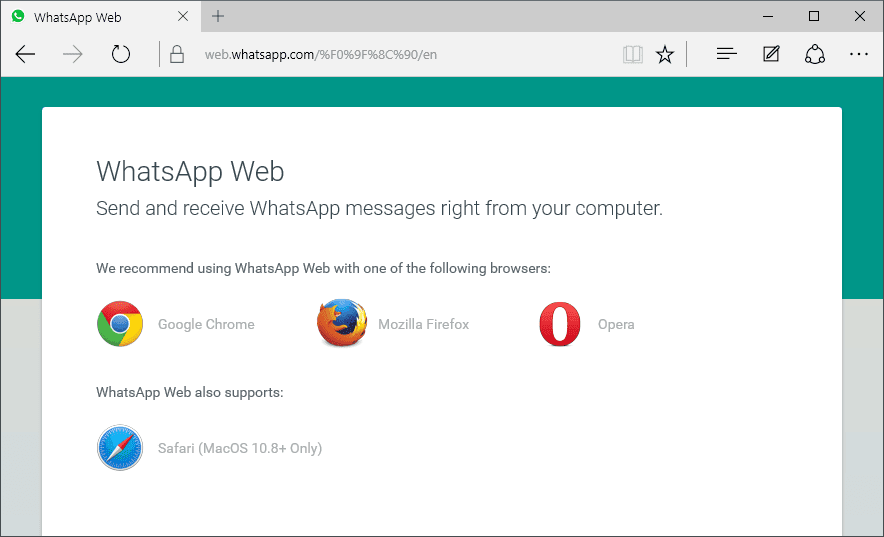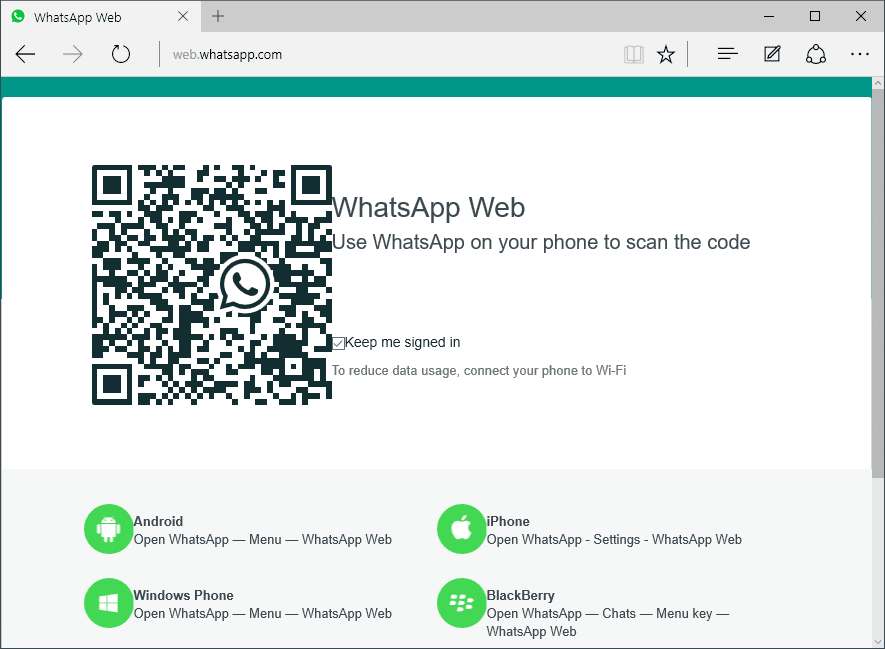WhatsApp, couple of months ago, launched a web version of its instant messaging service. You're required to keep the application installed on your smartphone to use the web service, otherwise you can't access the site. It'll be useful to users who uses desktop for most of their work, you can browse news channels, Facebook, write blogs and chat on WhatsApp within same window.
The web version was first launched for the users of Google Chrome, but it was then extended to the users of other web browsers like Firefox, Opera, and Safari. Unfortunately, it isn't available for the users of Microsoft Edge browser right now, and it may take sometime for the developers to make it compatible on Edge. For now, You'll see the following page when you try to access the WhatsApp Web.

If you want to access the site right now, you can change the user agent string to one of the supported web browser using developer tools. Follow the following steps to get started.



The web version was first launched for the users of Google Chrome, but it was then extended to the users of other web browsers like Firefox, Opera, and Safari. Unfortunately, it isn't available for the users of Microsoft Edge browser right now, and it may take sometime for the developers to make it compatible on Edge. For now, You'll see the following page when you try to access the WhatsApp Web.

If you want to access the site right now, you can change the user agent string to one of the supported web browser using developer tools. Follow the following steps to get started.
- Visit WhatsApp Web from your Microsoft Edge web browser. It'll not show you any QR code for scanning.
- Next, click on the "More actions" button and then select F12 Developer Tools.

- Now, click on the "Emulation" tab in the Developer Tools and change the User agent string to Google Chrome or any other supported web browser. See the screenshot given below.

- Go to web.whatsapp.com on your Edge browser and scan the QR code with WhatsApp application on your smartphone.

- That's it!

Comments
Post a Comment